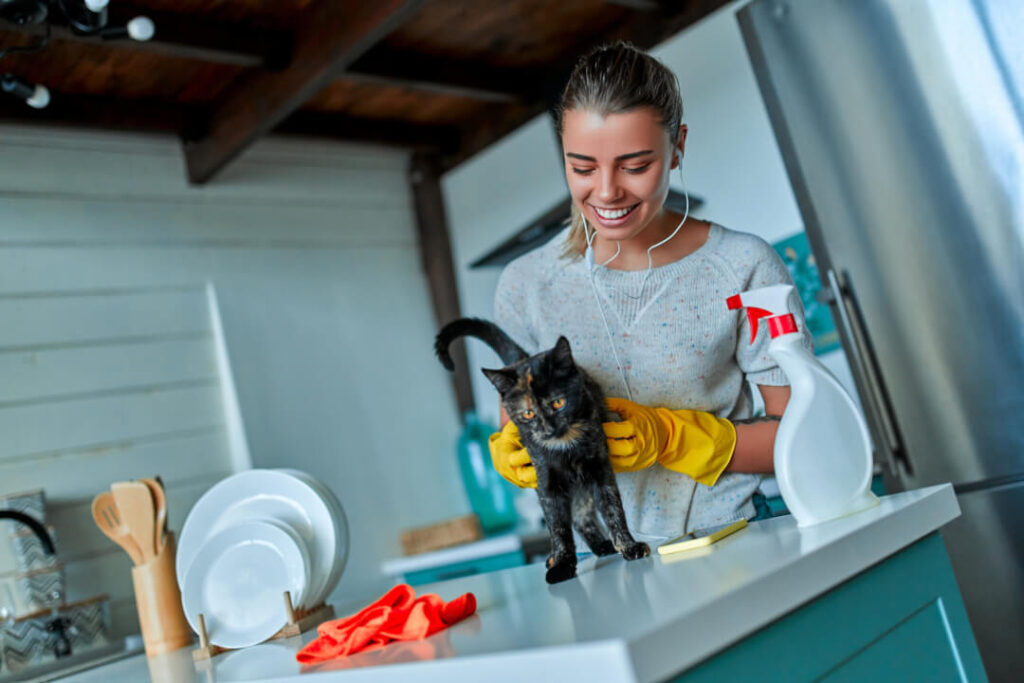Want to bathe your cat?
There are some points you should definitely consider!
“Splish splash I was taking a bath” sang Bobby Darin back in the 50s. Making sure that cats will go into the bath without a fight is not an insurmountable challenge.
Not all cats are enthusiastic when they come into contact with water. There are a few exceptions that really enjoy getting wet.
The Main Coon is one: they’re crazy about water. Sometimes they even dip their food into water before they eat it.
Even if you don’t have a furry water baby at home, you may still want to know how and when to bathe your cat without too much stress.
Hygiene and cleanliness are important for cats
Cats are by nature very clean.
They spend a lot of time exhaustively grooming their bodies.
Their fur coat is always meticulously licked into shape!
Every day.
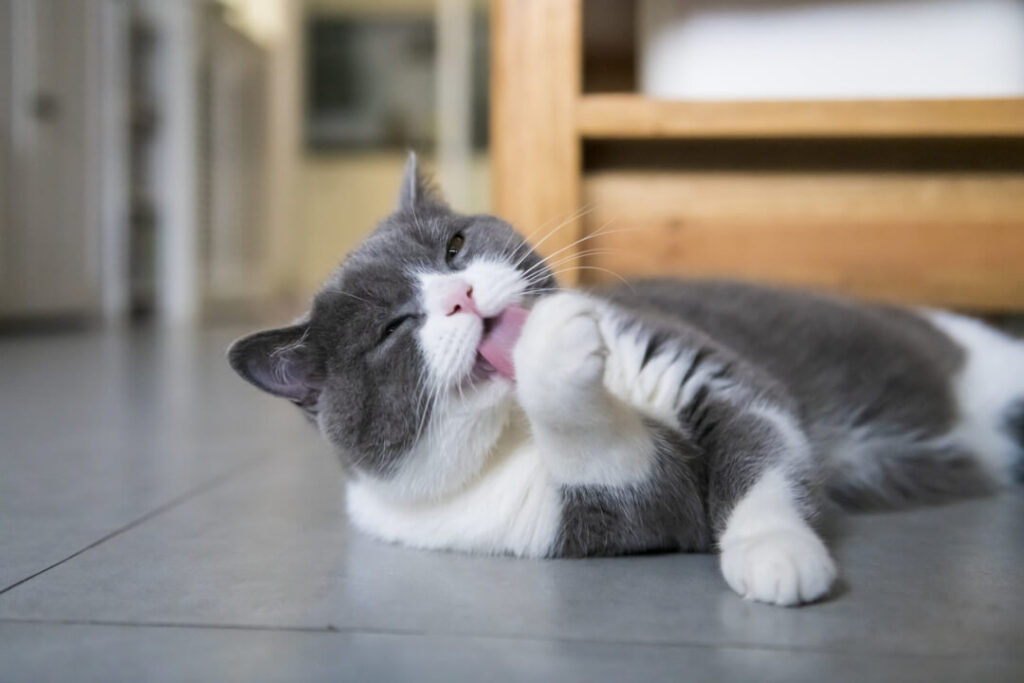
Cats have a sensitive sense of smell
Our sharp-nosed kitties smell everything more intensively.
They have highly sensitive olfactory organs and thus react much more strongly to unpleasant odours than we do. While you may only slightly notice a smell, your cat will immediately turn away in disgust if it’s too strong!
Cats love feeling good
Stroking, cuddling, grooming are what most cats like!
And a cat that is groomed from head to paw feels good.
Brushing their coat is part of grooming. This not only keeps it clean and glossy, but also prevents hairballs forming.
Different hygiene for indoor and outdoor cats
Indoor cats live in a protected environment. But outdoor cats that roam through nature are exposed to all weather conditions, other external hazards, and can even bring home uninvited guests that you don’t want:
dirt, vermin and parasites.
Why do cats like to clean themselves?
As kittens, cats clean themselves. It’s an innate primal instinct. The mother cat licks the kittens to stimulate their digestion and create their scent. Kittens thus learn in the first weeks of their lives how to properly care for their fur in preparation for life.
Cats don’t sweat
As cats don’t have as many sweat glands as you do, to cool down in hot weather, they have to make up for it by licking their fur. Rapid breathing and saliva evaporating on their fur cools them down a little.
Cleaning relaxes and reduces stress
Extensive cleaning not only removes bothersome tufts of hair and annoying parasites, it also relieves tension, calms and relaxes your cat. If s/he is constantly cleaning, i.e. more than the “normal” 3 to 4 hours per day, this can also indicate that your cat is feeling quite stressed.
Should I bathe my cat?
Actually, cats don’t need cleaning by others.
They usually do it by themselves.
A wet towel may not be enough when outdoor cats come home filthy. If there are potentially nasty parasites on them, a personal bath makes sense!
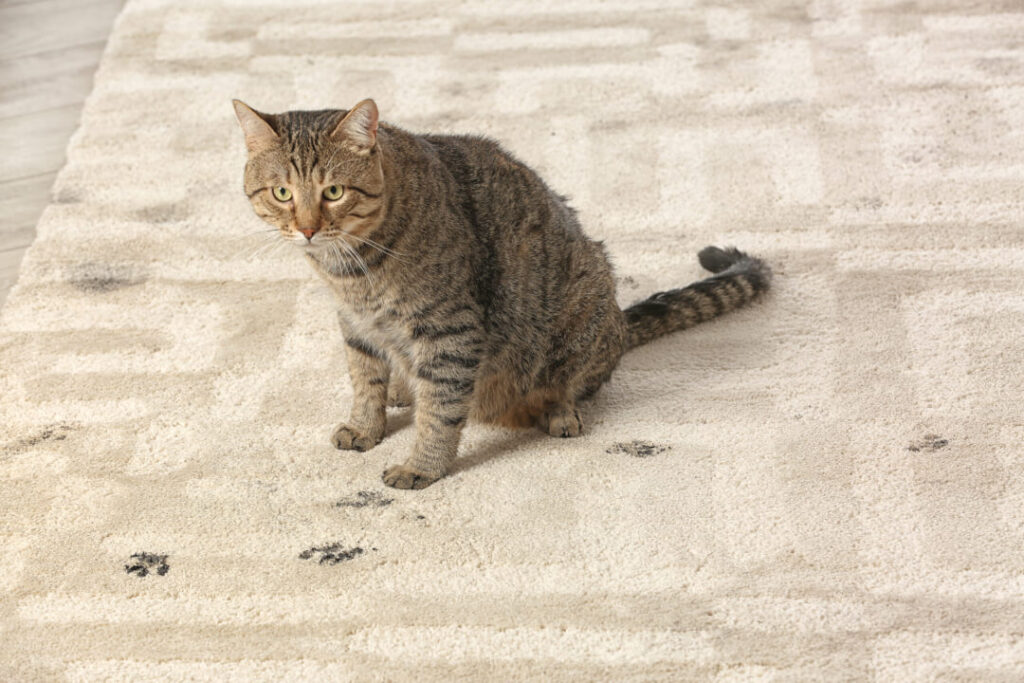
Reasons for and against a cat bath
Cats lick their fur to groom it, as well as maintain their personal scent. If this individual “marker” is missing, it can be problematic.
A bath is only necessary if there is no alternative. For example if your cat is extremely dirty, if she cannot clean herself for some reason (age, disability), or if it makes sense to bathe him to get rid of parasites.
Preparing a bath for a cat
No cat dances for joy when a bath is being prepared. There may be exceptions, but we haven’t come across many yet…
Source:
Simon´s Cat (2019): BATHTIME – Missing Cat Pt. 1,[YouTube-Video.], published on 28.03.2019, https://www.youtube.com/watch?v=Vb0DVVZQc08, accessed on 08.04.2020
If you want to give your cat a bath, you need a plan – a smart strategy that leaves nothing to cat or chance!
TIP: If you want to bathe your cat, you should approach this strategically!
1. Secure the area:
- Close windows and doors (bathroom door only when the cat is in the room of course!)
- Remove breakables from reach
- Turn on the heating a little in winter so the room is warm enough
2. Prepare washing items:
- Set out what you need (shampoo, washcloths, towels, thermometer)
- Put a little water (maximum 15 cm, at 35°) in a basin or tub
- Lay out towels to protect against splashes and drips
…and it can’t hurt to call for reinforcements: one for washing, the other to distract! This way you all have a chance of surviving the bath physically unharmed.
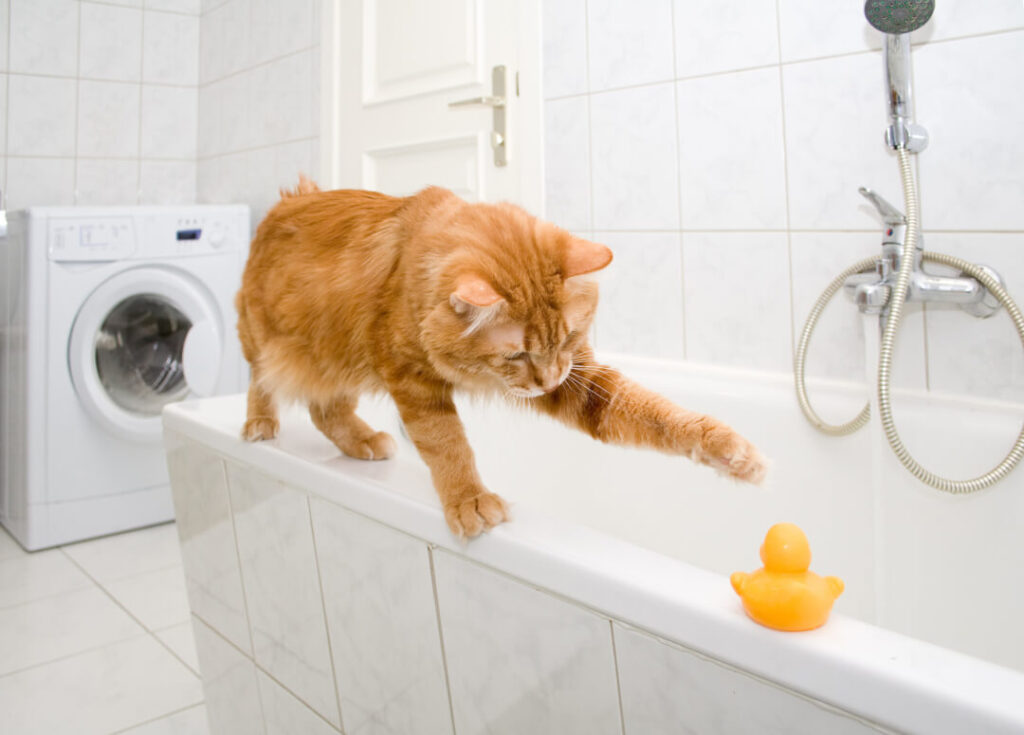
Aids
Before you start, get everything you need for bathing or washing ready to hand.
If not, your cat might take the opportunity to make its escape!
Cat shampoo
There are many cat shampoos, and that can make it difficult to choose the right one. Make sure you use one without artificial additives or fragrances. Shampoos you use for yourself or other animals, like dogs, aren’t suitable for cats.
Here’s a “2020 Cat shampoo guide & comparison”
Source:
StrawPoll.de (2020): „Katzenshampoo Ratgeber & Vergleich 2020“,updated on 09.09.2020 at 08:41:16 Uhr, online at https://strawpoll.de/katzenshampoo/,accessed on 08.04.2020
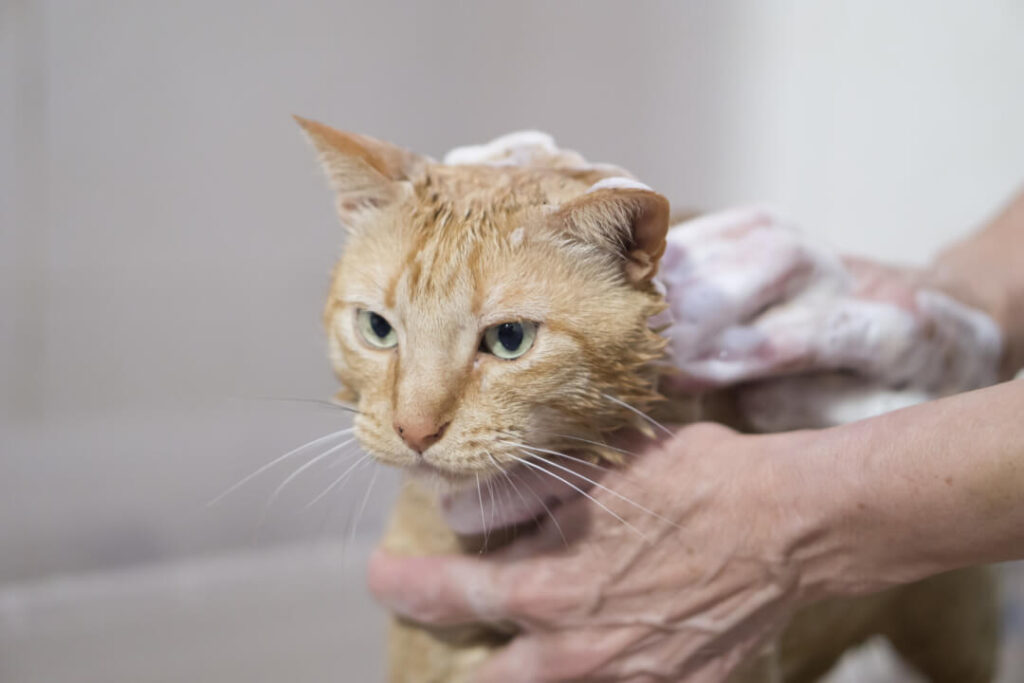
Washcloths
BYou need to be really careful around the cat’s face during bathing.
Never direct a showerhead or water over a cat’s face!
Use a soft washcloth and clean the face delicately
– with lukewarm water only: no shampoo!
Basin or bathtub
A basin of water is perfect for a cat’s bath! Put the basin somewhere your cat can get used to it first. Fill it with a little lukewarm water so that s/he is wet from feet to stomach. You can also put your cat in the bathtub. That way the floor stays nice and dry and you won’t need so many towels.
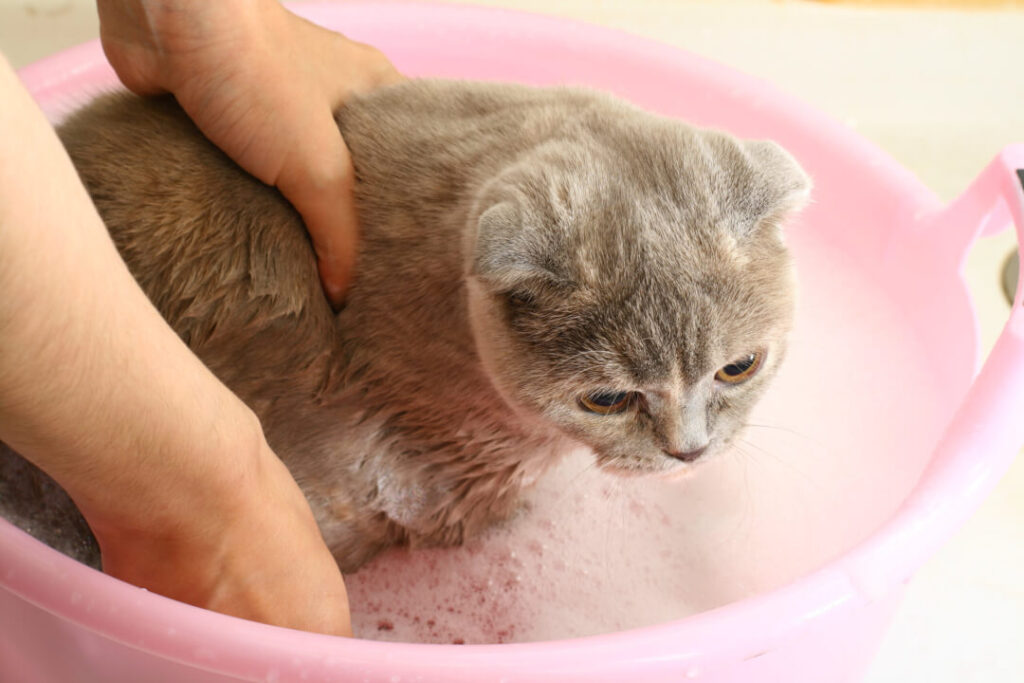
What to consider when bathing my cat
Lift your cat carefully into the warm water.
Then, using a measuring cup, gently pour water over the cat’s body, from the neck down to the tail.
Avoid the face: always clean it with a soft washcloth.
Then apply some shampoo, massage it in and rinse the coat with the measuring cup.
ATTENTION! Never shampoo the face or eyes!
Clean these with an extra washcloth and without shampoo!
After the bath
When all the shampoo is rinsed from the fur, you can gently brush the remaining wateroff with your hand. Lift your wet puss onto a towel and dry him or her.
Cats usually don’t find dry rubbing or light blow-drying too tingly.
Make sure that your cat can dry in a warm place in peace afterwards.
It’s done! Praise them and give them a favourite treat afterwards so that they hopefully remember the bath as a positive experience.
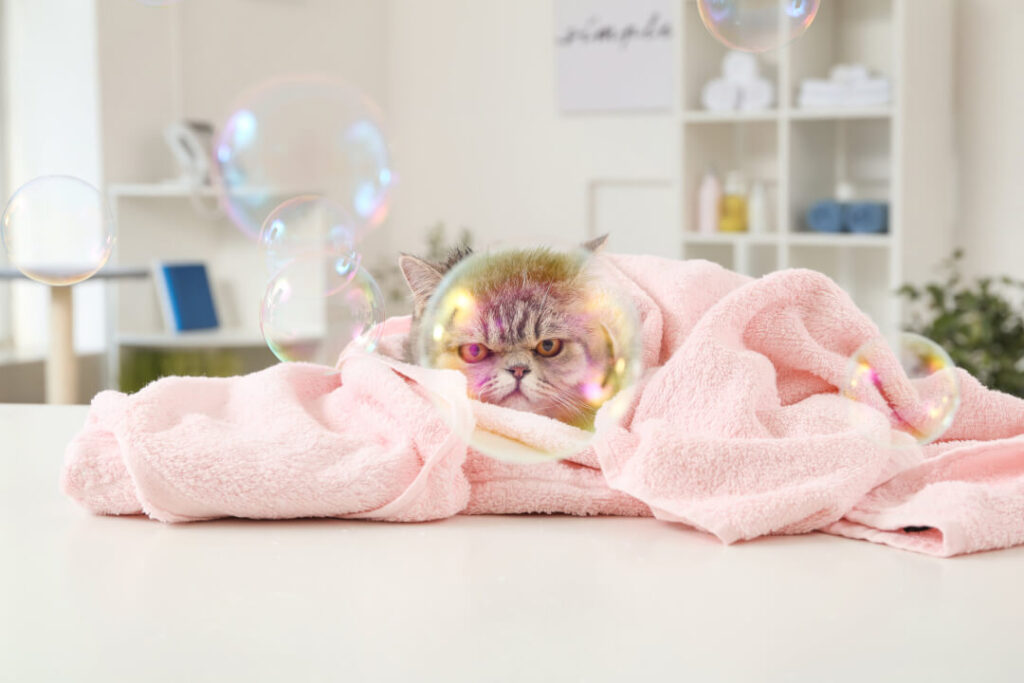
Cat baths: things to pay attention to
When grooming your cat, you should regularly clean fur, although a healthy cat takes care of this quite independently up to a certain age. But also check and look after skin, claws and teeth from time to time.
Fur and skin
Start with a metal comb with rounded tips. Next step is with a slicker brush. Then brush (always in the direction of the fur) using a natural hairbrush in gentle, stroking movements.
Oral hygiene and brushing teeth
Cats sometimes get agitated when you come at them with a toothbrush and paste. You need make the whole experience more acceptable. Special toothbrushes for cats and tasty toothpastes make brushing teeth easier.
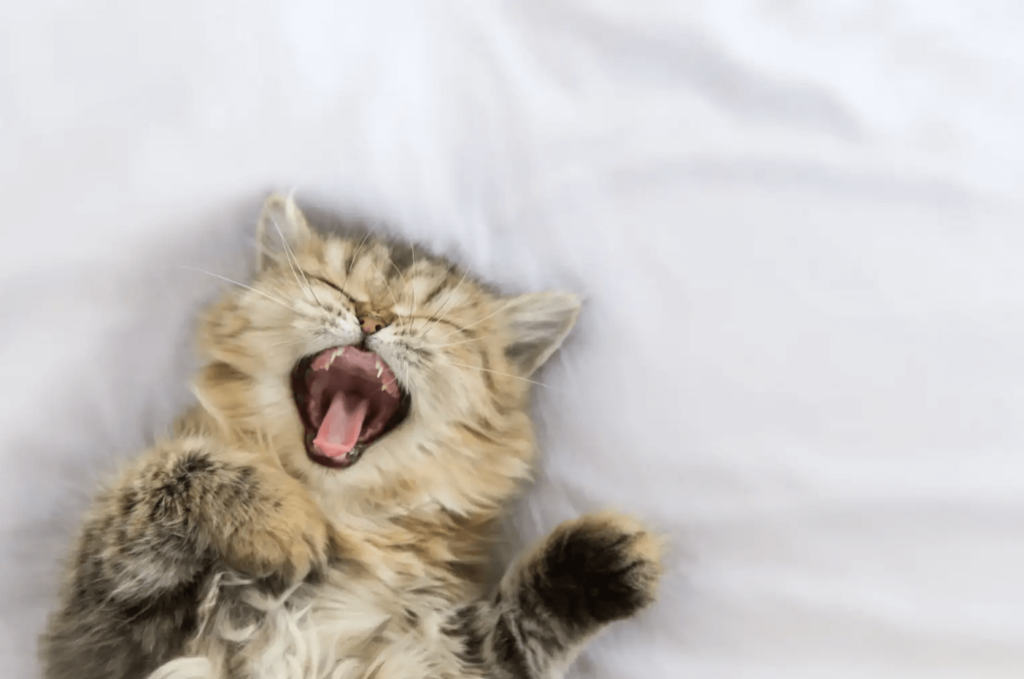
Claws
For cat claws, well-stocked specialist shops have claw scissors that are specifically shaped to make claw care as comfortable as possible for owners and their pets. These claw scissors cut the cat’s claws precisely and cleanly without breaking or splintering them.
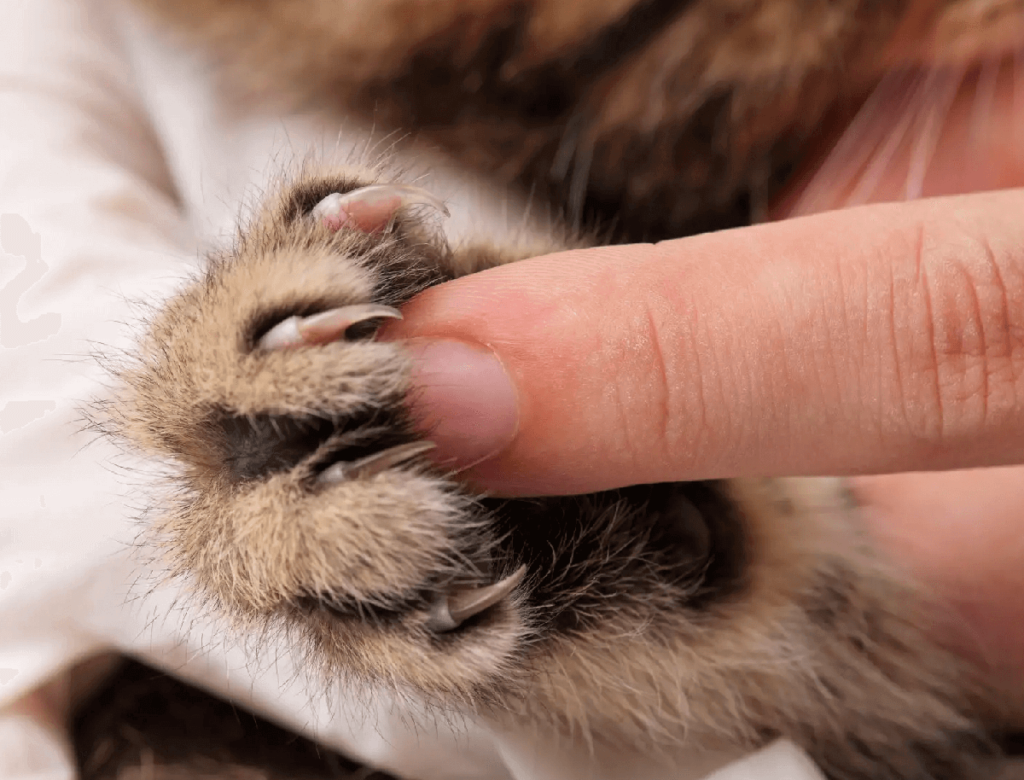
Clean ears and eyes
If the auricles are dirty, you can simply clean them with a paper tissue or cotton pad. Wet them lightly with some lukewarm water and carefully clean the inside of the auricles with it. Don’t moisten it too much, but just enough to make cleaning easier!
Please never clean with ear buds or pointed objects!
Don’t penetrate too deeply into the auditory canal and don’t clean too forcefully!
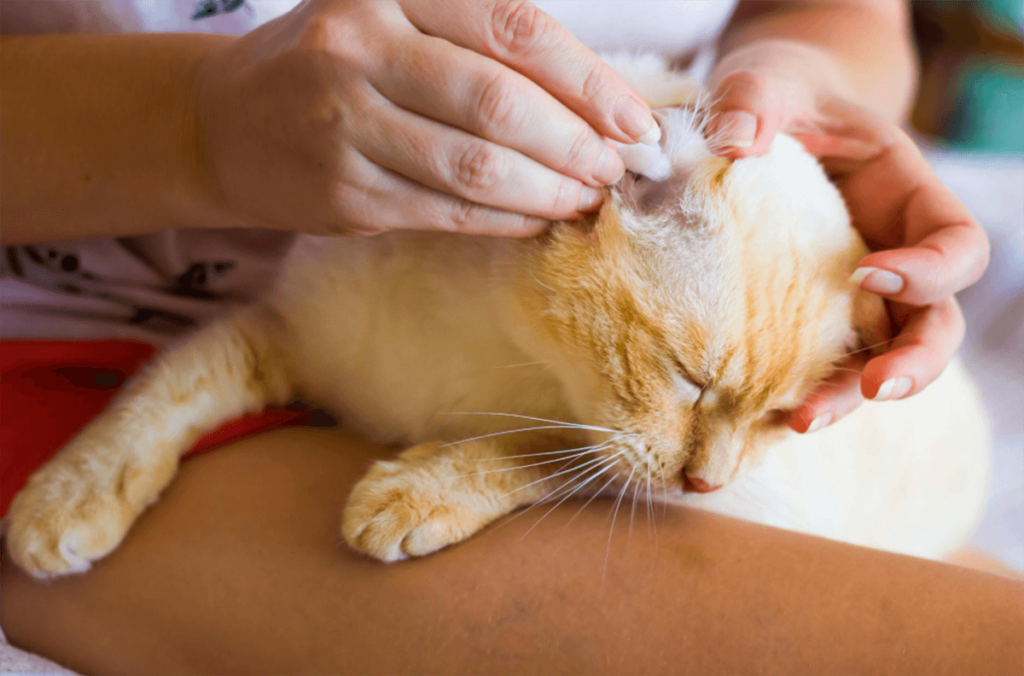
Consequences of poor hygiene
Many studies show that cats are good for their human companions physically and mentally!
Our cats are close family members – sometimes a bit too close! There’s a risk of infection if hygiene leaves something to be desired.
Cats can transmit viruses and bacteria
Certain viruses and bacteria can only be transmitted from cat to cat; but others can be passed on to us. With the COVID-19 pandemic, we all know how it works:
wash your hands after stroking your cat. And, even if it’s hard, no kisses!

Cats can get diseases
Cats can get ill from bacteria and viruses.
You can protect your puss by vaccinating against certain diseases:
- Chlamydia (Chlamydiosis)
- Feline leukemia (FeLV infection)
- Feline infectious peritonitis (FIP)
- Feline plague, cat cold
- Rabies
(Source: https://www.bft-online.de/der-verband/verbandsprofil/, status 03.04.2020)
Cleanliness of a cat’s environment
Naturally, cat litter trays as well as food bowls are the primary sources of bacteria and viruses developing and spreading. Bacteria thrive in temperatures between 10 and 30 degrees and in humid conditions.
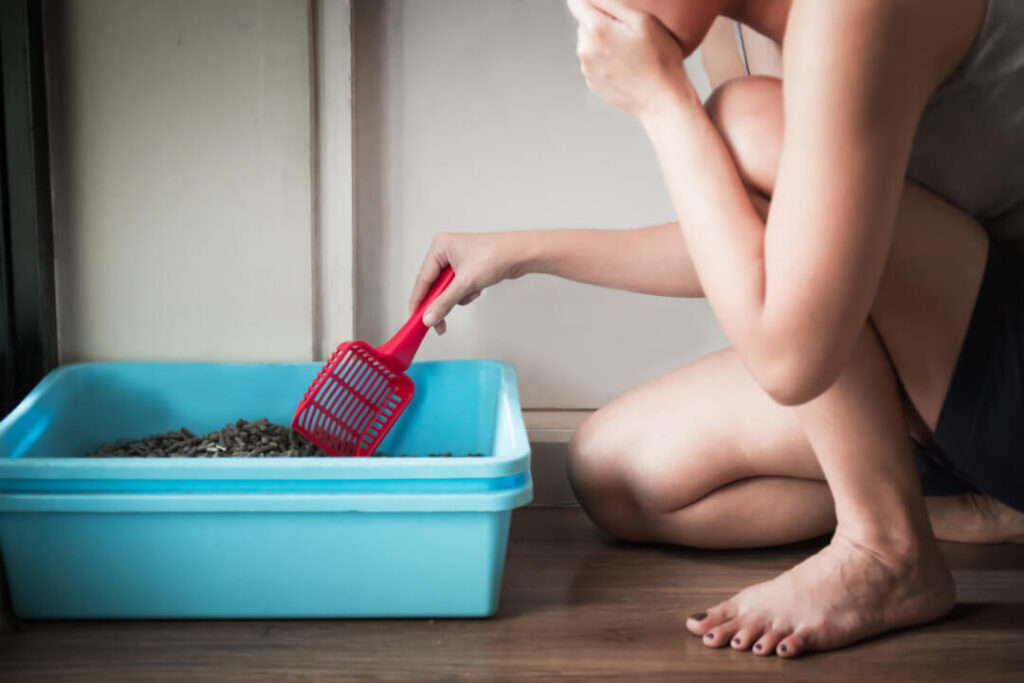
Clean the litter tray thoroughly and regularly
Make sure the litter tray is always clean. Before you change the litter completely, you should wash the litter tray:
- Empty the cat litter tray and dispose of the contents
- Fill an empty plastic basin (in shower or bathtub) with hot water and neutral detergent
- Leave the whole thing to soak for 10-20 minutes
- Pour out the water mixture and remove residue with a brush or sponge
- Then rub the bowl with a towel or kitchen roll to make it nice and dry
- Put the dry litter tray back and fill up with fresh cat litter
Cat’s Best Original prevents bacteria and odours
Bacteria create odours when they have enough moisture and warmth. You can effectively eliminate them by removing the moisture.
Cat’s Best Original does just that! With its technologically refined active wood fibres, Cat’s Best ensures that odours don’t stand a chance. They absorb moisture immediately and seal it in permanently.
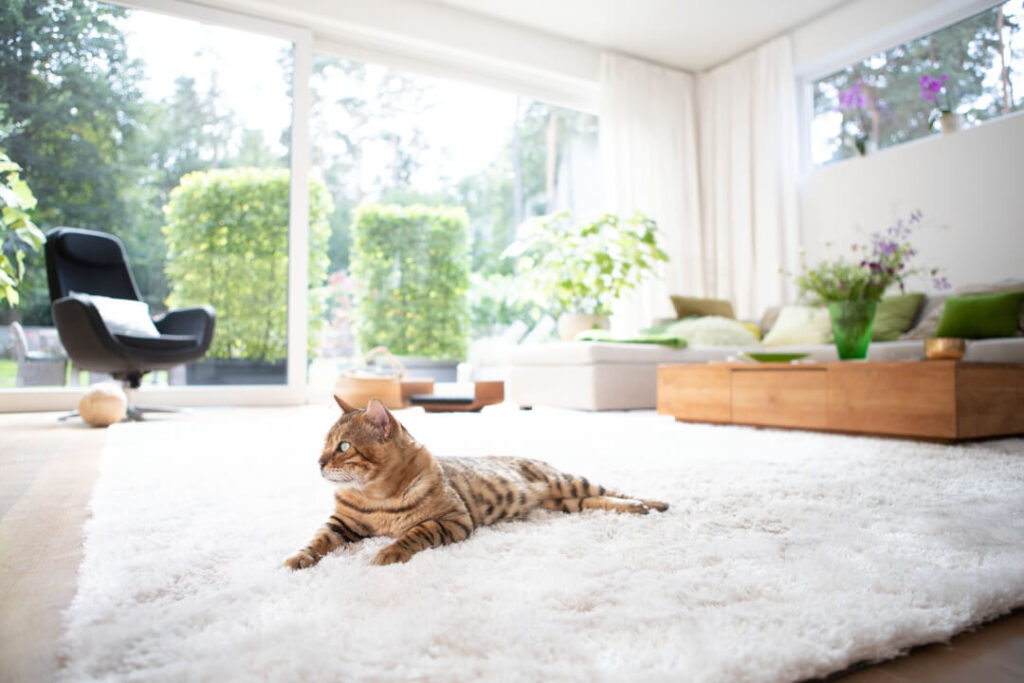
Keep cat litter tray hygienic
Because Cat’s Best Original clumps perfectly, you can easily remove soiled areas with a suitable scoop without affecting the remaining litter
Clean food bowls properly
It is best to keep several sets of food and drinking bowls made of metal, glass, enamel or porcelain for feeding, because a cat should always find food and water in a clean container. Always have separate water and food bowls.
Clean cat sleeping areas regularly
From time to time, cats need peace and quiet and a cosy retreat. A snug cat cave or cuddly pillow is best and you need to keep it clean. Put it in the washing machine and add detergent that you would use for sports clothes to eliminate bacteria.
Keep cat living spaces clean
Your cat appreciates a well-maintained, quiet environment. S/he loves rituals and the usual daily routine: food at the same time, a litter box that’s clean and always in the same place.
Clean upholstery and textiles
A good vacuum cleaner always ready to hand is a must for every cat lover’s home! To clean your upholstery and textiles there are special vacuum cleaners or extra attachments that can give you a helping hand.
Daily tasks
Two things to do everyday:
- Clean feeding area + bowls
- Clean the litter tray: Remove deposits several times a day. Dispose of excrement and soiled litter and refill with fresh litter.
